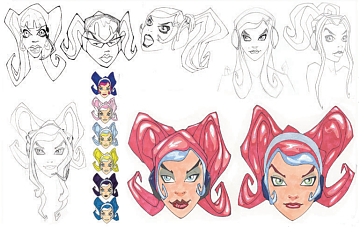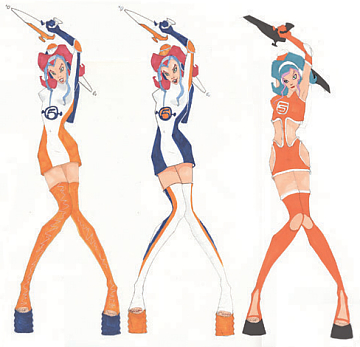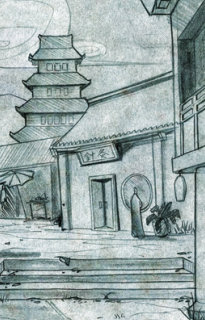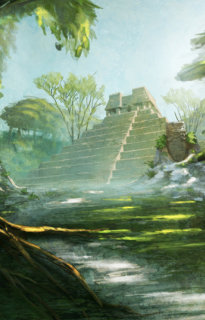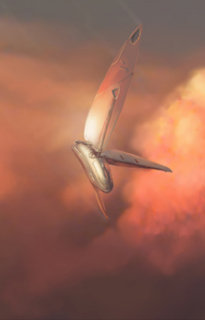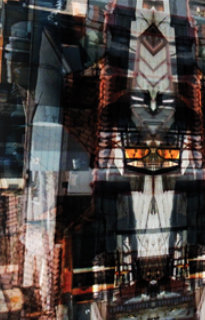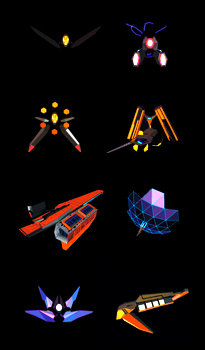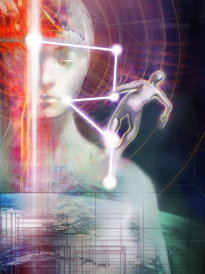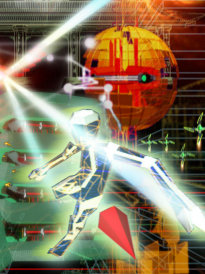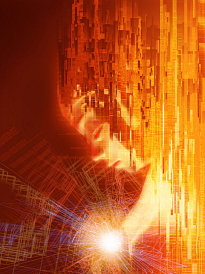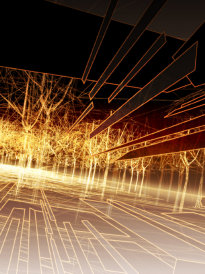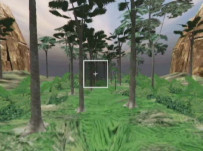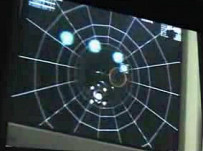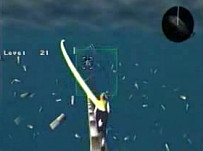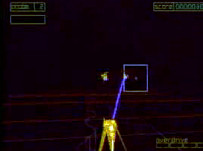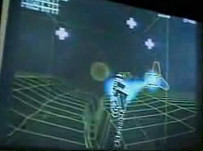Jake Kazdal
An American Gaijin
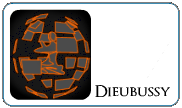
COREgaming
- 16 / 09 / 08
II. INTERVIEW
My impression of Jake Kazdal is that of a very talented artist who proved to be very accessible. He was kind enough to help me understand more about his life during those intense four years at UGA. Since I’ve been admiring the studio’s work for a long time now, interviewing him was an exceptional chance to understand a little more about the reality of creating memorable videogames for a living - and hopefully to present the reader with a decent article.
-------------------------------------------------------------
COREGAMERS : According to David Perry's website interview, you present games such as TEMPEST and CENTIPEDE as the first great experiences with videogames. Looking back to that Golden Age of arcade games, as an adult who became a significant member of the industry, please explain to me what did you find so fascinating about those games and that specific period of video gaming.
Jake Kazdal : I don't know what drew me so much, I guess the hand eye coordination and the pure energy of the pixels lit up on those big dark screens in the dark back room of my Dad's pizza parlors in the late 70's and early 80's, it was pure magic.
CG : How did your education as an artist and animation filmmaker help you enter and progress through the videogames industry? (I understand that you regard education as a vital part of a successful career).
JK : Absolutely, knowing a lot about how games should act and feel is certainly a huge part of it but at the end of the day I get paid to make good art, and that in itself is a lifelong obsession. I still take classes and workshops all the time trying to keep up, it actually really eats into my game playing time!! But you've got to be able to perform under pressure, and a lot of practical training really helps.
SPACE CHANNEL 5's character design artwork
(JKOOXL DESIGN - Portfolio)
CG : When I played SPACE CHANNEL 5 some years ago, I felt that a great deal of the innovation the game presented was evident in the characters and their unusual style. There's a prevailing sense that futuristic sci-fi looks mesh with rocket-age lore, combining radiant spandex suits with 60's hairstyles, cloth-patterns and accessories. What was the key-concept you used while designing these characters?JK : I think one of the key inspiration sources for all of us was Barbarella, and once we started really defining what the game was, we started taking it further and further. I remember all of us laughing at the sheer ridiculousness of some of the later characters in the game, just spacey and as nutty as you could make it!
SPACE CHANNEL 5's character design artwork
(JKOOXL DESIGN - Portfolio)
CG : The credits for REZ mention you as the Graphic Designer, along with Ryutaro Sugiyama. Please help me understand what sort of work you performed in the production of the game.JK : Ryu-chan was a graphic designer (funny he is mentioned in this article, I bumped into him randomly at a party in rural Japan a year ago). I was mainly a character artist on REZ. Most of level one and all of level 2, I designed, modeled, and animated all the enemies.
There were two other artists doing the same work for other levels, two background artists and one Boss artist. It was a tiny team, but we had a great time making it. We went through a lot of changes while searching for the game's look, as I'm sure you've seen, but one of the biggest leaps forward was one night I was out partying in Tokyo and saw a Winamp plug-in playing crazy wireframes to trance music MP3's. I videotaped a bunch of it and presented it the next day to Mizuguchi-san and Utsumi-san, and the wireframe look was born!
CG : Years ago when REZ was released, I recall that the UGA website contained a staff section, where each of them presented a small message to the players. It seemed like there was a great working environment there at UGA. Can you describe, as best you can, your experience as a member of that creative group?
JK : I loved it. I was an outsider but pretty much everyone took to me pretty quickly. The quieter programmer team members definitely took their time getting to know me but many of the artists and designers were very outgoing and excited to work with such a weird big foreigner with as much passion and knowledge for games as they had!
It was a special time, we had the chance to do something really far out, with nothing really to base it on, no real spring board. We tried to go deep. We ended up much deeper at one point than the final game, but people outside the team playing it just didn’t get it, it was too weird. We had to start going backwards to make it more accessible and understandable.
CG : What sort of a direction were you taking before making the change?
JK : The game was going in a more abstract direction, the enemies tended to look more like background scenery, not feeling threatening or really even recognizable quickly as bad guys. So we had to make them puff up and move around more convincingly aggressive. Giving them all the eye helped too.
CG : Many sources point music and rhythm-based games such as the great precursor OTOCKY for the Famicom Disk System, as one of the largest inspirations for UGA's game plan and design. From what I see in the early footage of the game, the game we see today underwent a lot of test phases: was there a concise game objective the whole time during development? While in the planning stage meetings, were any other games/influences discussed as being significant references to the project?
JK : I played OTOCKY while working on REZ, but I can't say that was much of an influence really. Our main musician the DJ Ebizoo who was in charge of the music system, spent some time in Africa just prior to REZ (or during early dev? I forget) studying the tribal music of African tribes. He made videos and came back and presented them to the team, the theory of call and response, where one main singer will call out questions and statements and the tribe as a whole will answer back to him in song. Both Ebizoo-san and Mizuguchi-san were really into that and that was one of the big aspects they tried to really nail in the game.
CG : Often we hear descriptions of the man behind the games, but another thing is to hear from someone who actually worked with Tetsuya Mizuguchi. What are your thoughts on him as a creator and as a friend?
JK : I love him. He is the greatest. Super positive, super open, super receptive, super friendly, just an awesome guy to work with. One of the most positive people I have ever met. He's like an older brother to me, we still stay in touch, I see him at least a few times a year.
He loves thinking outside the normal boundaries, and while not militantly overseeing the entire project, he had a vision in his head and wasn't afraid to try new things as well as throw out cool things that weren't a part of that vision. I hope to work with him again someday.
CG : REZ is coupled with the abstract art of Wassily Kandinsky, the painter whose work and alleged synaesthesia were celebrated in the game. While investigating your resume, specifically in the year 1994, I understand you did some workshops on oil painting and animation. There I found that you had studied Russian Impressionist art. Considering that Kandinsky's early work is a significant part of that same subject, since he was influenced by the work of Monet in Paris, I ask if this relation between your education and that particular aspect of the game is purely coincidental.
JK : Purely coincidental. Did you know Sony ripped off a Kandinsky painting for all the icons on a CD/DVD player? Check it out. Play, pause, stop, fast forward, all of them were in a Kandinsky painting.
CG : I had no idea, but I think I know what painting you're referring to. Still, the game is dedicated to Kandinsky, and K-Project, the game's codename, is widely interpreted as meaning "Kandinsky Project".
JK : K-Pro does stand for Kandinsky Project. Kandinsky was all about synaesthaesia, which was the blending of all the senses. We were trying to bring together sound, vibration, movement and color into one unified sensation. His work was the original inspiration for REZ.
CG : Can you think of any interesting fact or trivia concerning REZ which isn't known to the general public?
JK : Well... largely ex PANZER DRAGOON guys, 3 super hot freelance artists, a visionary art director (Yokota, who was lead artist of PANZER DRAGOON SAGA, still at Q) One large strange white guy, a year of wacky pre-production that very few have seen, a TV documentary that aired after months of filming a few hours a week inside the studio, Underworld, Aphex Twin and Chemical Brothers were all ALMOST in the game, and the game shipped on my birthday in Japan! How’s that?
CG : While observing your portfolio, I kept thinking that all that high-quality conceptual art could indeed become the starting point for a major videogame. Each artist, while following the vision of the game designer or producer, tends to imprint his part of the work with his own references. What have been the references for your work so far, both inside and outside the videogames realm, as a visual artist?
JK : Thats a big question... I guess my love of impressionist art, heavy repeated exposure to Star Wars as a child, lots of videogames, old (60's-70's) anime, Koji Morimoto, a wild love of the big unknown, and an absolute fascination with realms unseen in modern life.
CG : The article about you on Gamasutra expressed some of that sadness you felt at the time when your career in Japan ended – since you had become fond of working in UGA it must have been really discouraging. What you think the future holds in store for you, apart from your vivid desire to study and learn more every day?
JK : Things are great. I get to choose what projects I work on now, I am able to contribute more and more thanks to all the studying I do, and I think games are still the absolute cutting edge of entertainment. My dream is to start my own small studio working both in Japan with my ex-teammates and other friends, and on the West Coast, spending large amounts of time immersed in both cultures and with enough time to experience new cultures on my time off!
JKOOXL DESIGN - ARTWORK
KAZDAL / YOKOTA ARTWORK
Rez (early version screens)
|

